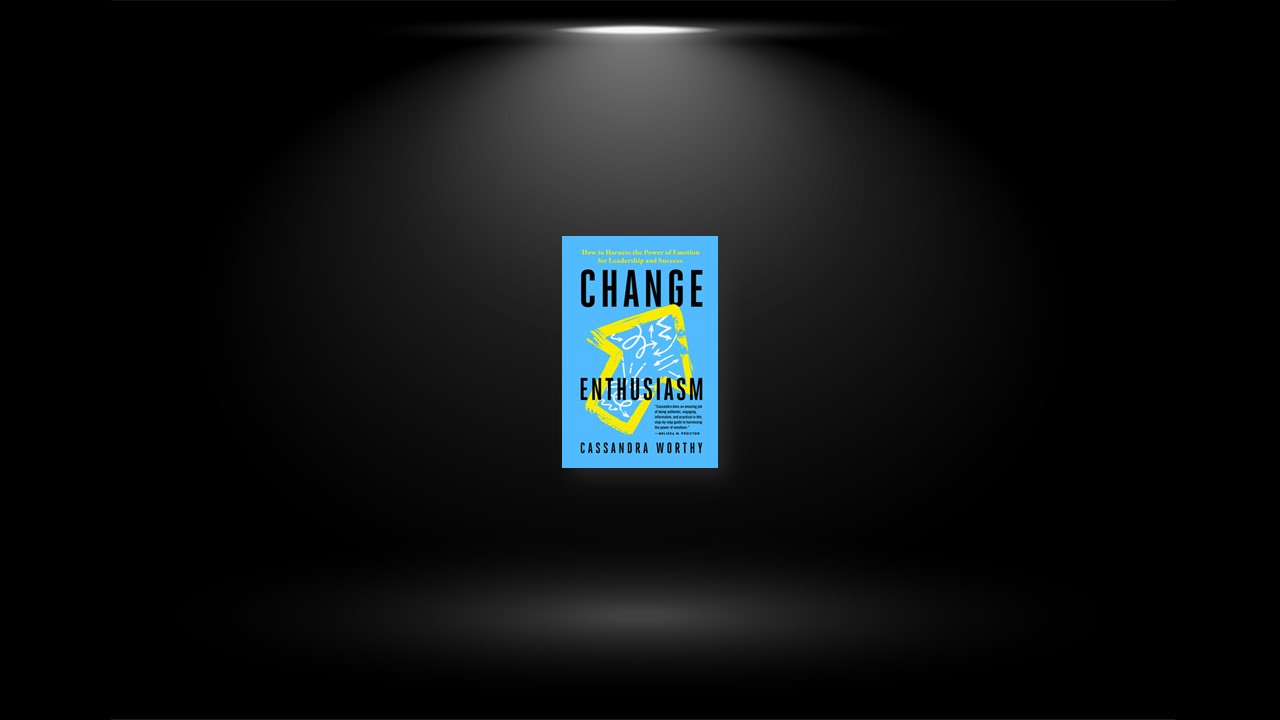Change Enthusiasm is a three-step growth mindset: Recognize growth-stalling emotions such as fear and anxiety as signals to grow. Embrace the opportunity change presents, exploring options that lead to your better. Make a conscious, productive choice, having explored what’s possible, to transform emotional energy into fuel toward a better feeling and better result.
The signal (or growth-stalling) emotions of change are fear, anxiety, frustration, anger, and grief. The growth-sustaining emotions of change are hope, anticipation, excitement, joy, and gratitude.
Change presents opportunity to grow toward your better self. 20/20 change vision is being able to see clearly that major change, disruption, or transformation happens for you, to serve your evolution to your best self. It is a knowing and trust that opportunity to learn and grow lies within even the toughest changes and disruptions.
Resilience is a muscle that is built through the practice of experiencing change, including any disappointment, failure, or rejection that may accompany it. When practiced on a regular basis, Change Enthusiasm becomes a growth cycle that helps strengthen your resilience muscle.
Lasting Change Is Rooted in Belief
Influencing belief is the key to influencing lasting change. Life experience, witnessed behavior, and communication (verbal, written, and perceived) serve to influence and reinforce thoughts. Belief is a thought you keep thinking.
Belief manifests in business through brand equity building, company purpose and values, and “beliefs to better” integration toward successful change adoption. Change Enthusiasm is a belief system that, when practiced, strengthens individual resilience and empowers growth and fulfillment through change.
Defining Our Relationship with Change
Defining your relationship with Change is critical to ensure growth. There are three core roles possible in Change: The Change Creator. The Change Leader. The Change Executor. The Change Creator gives the idea that makes Change possible. The Change Leader guides individuals, teams, or the organization as a whole through the implementation of Change. The Change Executor brings the Change into reality.
These relationships with Change are not mutually exclusive. It is possible to engage in more than one relationship for a given Change.
The Signal
Emotion is not only inevitable but a necessity in any successful business. Emotion is a powerful energetic entity that when understood, embraced, and effectively harnessed fuels authentic success and competitive advantage. The first step of Change Enthusiasm is embracing the signal emotions of change as invitations to learn and grow. It is practiced through three actions: Discovering the signal emotion. Stepping outside the emotion to view it objectively. Exploring the meaning of the emotion.
By understanding your emotional energy and how it may manifest within, you become better prepared to discover the presence of the signal emotions of change. Negative thoughts, once identified, can be pulled from our consciousness like weeds.
Just as weeds can be analyzed to inform you of soil type and composition, negative thoughts related to change can be analyzed to inform you of how you handle these types of changes and how your thoughts could change to create a better experience. Taking an emotional inventory during a given change challenge will help you identify the emotions present as well as the thoughts inspiring those emotions.
Emotional contagion is a phenomenon where an emotion expressed by one individual can be “caught” by another. This phenomenon is the reason we can sometimes feel inspired and happy when around one person, or tense and uneasy when around another. Our emotional energy impacts not only us but those around us.
The Opportunity
Opportunity is defined as a good chance for advancement or progress. Trusting in the signal emotions of change to indicate the existence of opportunity and then exploring ways to capitalize on that opportunity is the second step of Change Enthusiasm.
Recognizing something positive happening because of a past change challenge (growth, learning, new connection, etc.) creates a seed of trust that no matter how difficult a change may be there is opportunity within it.
When devastation hits in either our personal or professional worlds, the opportunity to learn and improve how we navigate trying times is never greater. Change not only reminds us of our resiliency but invites us into a chance to grow even stronger. Our growth, in its evolutionary nature, demands intermittent periods of pain and struggle. When exploring the opportunity that change presents, it is beneficial to invite close friends or mentors into the process to serve as sounding boards and sources of differing perspectives.
The Choice
One of the most powerful tools in the arsenal of humanity is choice. The third and final step of Change Enthusiasm puts you in a seat of choice—the sole owner of how you experience a given change situation. Though it can be easy to do only the bare minimum that is expected during change and/or to actively avoid the pain the change inspired, by choosing that path you will not maximize the growth opportunities into which your signal emotions are inviting you.
Taking a daily choice inventory can help inform you where you are placing your priorities and enable you to take control of how you are living this one life you’ve been gifted.
There are things in life that happen completely outside of your control, such as losing a job or getting a new manager, but what is never lost is your ability to control how you experience these situations or events. Within the dynamic created in dealing with those things we can control and those things we cannot lies the tension through which growth is made possible.
The growth-sustaining emotions of change (joy, gratitude, excitement, anticipation, and hope) not only inspire us to make and sustain a given change, but also a sense of fulfillment. Our emotional energy can either be conserved, transferred, or transformed, all through the power of choice:
Emotional energy conservation is ignoring or holding the energy within, which over time runs the risk of leading to declining health or emotional outbursts released upon others in unhealthy, unproductive ways.
Emotional energy transference is venting or transferring the energy from ourselves to another individual. Though this often creates better feelings in the short term, by simply moving the energy around it remains unchanged.
Emotional energy transformation is recognizing the energy being experienced and then choosing actions that transform the signature of that energy into something else.
When navigating a change challenge, you can transform emotional energy by bringing awareness to and choosing to live your core values.
Resiliency Thrice Reimagined
Resilience can be framed in three ways: a muscle, a bounce-back tool or spring, and a prize-giver of strength and the ability to own our narrative. Considering resilience as a muscle, it must be strengthened through the practice of experiencing change. Just as our physical muscles must be torn during strength training to regrow, so must our resilience muscle be tested in the experience of change.
Pain is a by-product of growth. Resilience cannot exist in the absence of hope. Resiliency or bounce-back happens at our lowest point when we choose to allow hope to spring us back up. Hope is the most critical of the growth-sustaining emotions, helping us to persevere through even the darkest times.
The more you practice Change Enthusiasm, the better and better able you will become to own your narrative and maximize your opportunities during the trying times of change.


